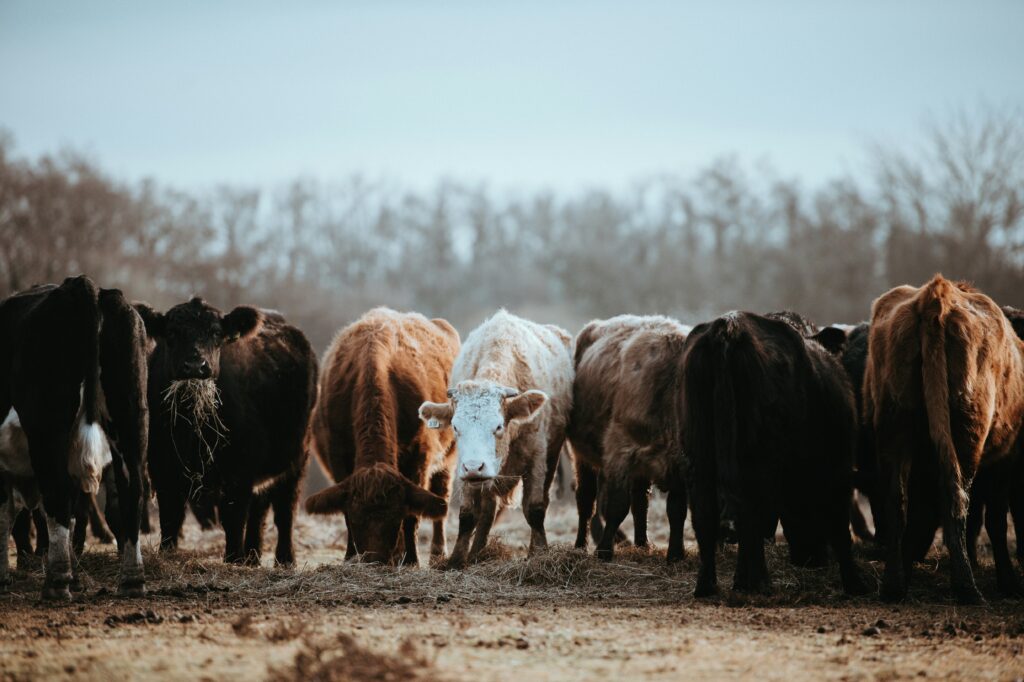
When it comes to beef cattle, selecting the right breed is critical for efficient beef production, herd management, and environmental adaptability. Different breeds offer distinct traits, such as growth rate, temperament, and adaptability to various climates. Understanding these traits helps farmers and livestock enthusiasts make informed decisions for their farms or projects. We’ll explore the fascinating world of beef cattle breeds, diving into their history, key characteristics, and how they impact beef production today.
Introduction to Beef Cattle Breeds
Beef cattle come in a variety of breeds, each with distinct features suited for different environments and purposes. These breeds have been developed over centuries, combining traits like hardiness, fertility, and meat quality.
Hereford Breed: Early Cattle Breeders’ Choice
The Hereford breed originated in England in the 18th century and is recognized for its hardiness and adaptability to diverse climates. Known for their reddish-brown coat and white faces, Herefords are a popular breed worldwide due to their ability to thrive on pasture-based systems and their efficient beef production.
Aberdeen Angus: The Hornless Beef Cattle
The Aberdeen Angus, often called simply Angus is a hornless breed that originated in Scotland. Angus cattle are renowned for their high-quality marbled meat and adaptability to harsh environmental conditions. Their beef is prized for its tenderness and flavor, making them one of the most sought-after beef breeds globally.
Brahman: The Bos Indicus Cattle for Hot Climates
Brahman cattle, a part of the Bos indicus family, are ideally suited for hot climates and regions with heavy insect populations. These cattle, with their characteristic large humps and loose skin, were imported to America from India. Their ability to withstand heat, disease, and insects makes them essential in tropical and subtropical regions.
Charolais: European Breeds for Leaner Meat
The Charolais breed originated in France and has become a key player in beef production globally. Charolais cattle are prized for their large size and leaner meat, which appeals to health-conscious consumers. These European breeds are often used in crossbreeding programs to enhance beef quality and increase weight gain in herds.
Zebu Breeds: Adaptability in Hot and Harsh Conditions
Zebu breeds are native to South Asia and are known for their ability to thrive in hot climates and withstand tough environmental conditions. Zebu cattle, including the Brahman, possess traits such as heat tolerance, resistance to parasites, and survival ability on minimal resources, making them invaluable for regions with challenging conditions.
Santa Gertrudis: American Innovation in Beef Production
Developed in Texas, the Santa Gertrudis is a crossbreed of Shorthorn and Brahman cattle. This breed was designed to combine the fertility and meat quality of European breeds with the heat tolerance of Zebu cattle. Santa Gertrudis cattle excel in beef production in hot and humid regions, making them a go-to breed for American ranchers.
Shorthorn: The Dual-Purpose Breed
The Shorthorn breed originated in England and is valued for both milk production and beef. Known as Durham cattle in the past, Shorthorns are now widely recognized for their versatility in providing both high-quality milk and beef. This dual-purpose breed is an excellent choice for farms seeking diversity in their livestock operations.
Simmental: One of the Oldest and Most Versatile European Breeds
The Simmental is a European breed with a long history, dating back to the Middle Ages. These cattle are known for their size, milk production, and excellent beef qualities. They have been used extensively in crossbreeding programs to enhance both beef production and fertility in herds worldwide.
Belted Galloway: Cold Weather Specialist
Belted Galloway cattle, often referred to as “Belties,” are native to Scotland and are highly suited to cold and rugged environments. With their thick coats, these cattle are perfect for regions with harsh winters. Their meat is lean and flavorful, making them popular in niche markets.
Crossbreeding: Enhancing Traits for Better Beef Production
Crossbreeding between different beef breeds allows farmers to combine the best traits of each. For example, crossing Brahman with Angus results in cattle that can withstand heat while still producing high-quality, marbled beef. Crossbreeding can improve fertility, growth rate, and overall herd health, making it an essential strategy in modern beef production.
Environmental Conditions and Beef Cattle Breeds
The adaptability of beef cattle to various environmental conditions is one of the primary factors in breed selection. Breeds like Brahman and Zebu thrive in hot, arid climates, while breeds like Belted Galloway are more suited to colder regions. Choosing the right breed based on climate helps ensure a sustainable and productive beef operation.
European and American Beef Cattle Breeds: What Sets Them Apart
While European breeds like Hereford and Charolais are known for their meat quality and size, American breeds like Santa Gertrudis have been specifically developed to withstand the local climate. Both have their unique strengths and are often used in combination for optimal results.
Cattle Management and Beef Production Efficiency
Efficient cattle management plays a vital role in maximizing beef production. Proper feeding, pasture management, and health monitoring are critical factors that affect a herd’s performance. Using breeds suited to specific environments and farming practices enhances productivity and profitability.
Feeding Practices for Optimal Beef Production
The feeding practices for beef cattle vary depending on the breed and production goals. For instance, Angus cattle require a diet rich in energy to produce the marbled beef they are famous for. In contrast, Brahman and Zebu breeds can thrive on lower-quality forage due to their efficient metabolism.
The Future of Beef Cattle Breeding
Advances in genetics and breeding technology are shaping the future of the beef industry. By understanding the genetic makeup of different breeds, farmers can select animals with superior traits, improving meat quality, disease resistance, and environmental adaptability.
Conclusion: The Right Beef Cattle Breed for Your Herd
Choosing the right beef cattle breed depends on many factors, including environmental conditions, production goals, and available resources. Whether you’re focusing on lean meat production, adapting to hot climates, or maximizing growth rates, understanding the traits of various beef breeds is key to successful livestock management.
Spencer Schwartz